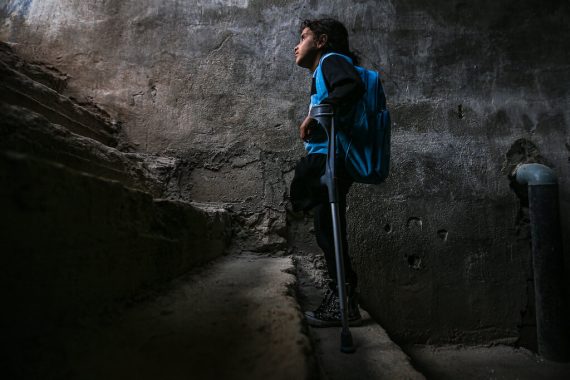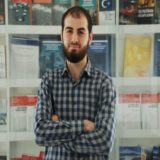In April 2022, I had the opportunity to visit northern Syria, Azaz and Idlib, which locals define as liberated both from the PKK terror and from the tyranny of Bashar al-Assad since Turkey’s military operations in 2016.
I plan to share here my observations particularly on the question of education. Among others, I will address the questions: How do education and life look like in Syria? What does education mean for Syrian children? How do Turkey’s military operations reflect on education?
Education matters
Contrary to my expectations, social life in Syria is vibrant and the economy is somehow functioning. The local economy is alive, and people are engaged in trade, with agriculture taking the lead. The economy is functioning independently in these places and is controlled by local authorities—not by the Assad regime, and no taxes are paid to the regime. Even though the challenges to achieving economic growth are so many, Syrians have not given up their struggle for survival.
Schools play a major role in keeping hope for the future alive. In northern Syria, schools mean more than just educational centers. For many, schools are safe spaces for socializing with others. Education and socialization protect people from joining terrorist or other armed groups.
Northern Syria consists of two educational zones. The first one starts from Afrin and includes Azaz, Jarablus, al-Bab, Ras al-Ayn, and Tel Abyad. Education in this zone is coordinated by Turkey and run by locals. The second educational region is the Idlib region. Classes in both regions are directed by the local ministry of education, which manages to administer them by dividing them into four educational directorates, namely Idlib, Hama, Aleppo, and Sahel.
Due to the insufficient economic resources of the local Syrian government and the limited support by the United Nations and other international aid organizations, around 6,000 teachers out of a total of 33,000 work voluntarily with no salary. More than 410,000 students are currently enrolled and receiving education in these educational zones from preschool to the last year of the high school. There are approximately 250,000 students who have reached school age and cannot go to school. This figure increases when adding those who have reached high school age and are unable to go to school.
There are approximately 30,000-35,000 university students in northern Syria. Aleppo and Idlib have state universities, while Turkey permitted Gaziantep University and the University of Health Sciences to operate in the region, opening new faculties such as the Faculty of Islamic Sciences, the Faculty of Economics and Administrative Sciences, and the Faculty of Education.
The Turkish NGO Humanitarian Relief Foundation (IHH) opened the International Damascus University six years ago in Azaz. The latter and the aforementioned faculties of Gaziantep University and University of Health Sciences are given utmost importance and public attention by Syrians.
The Syria civil war affects children badly
The physical destruction caused by the war in Syria is one side of the coin. However, war does not only destroy buildings, roads, parks, hotels, hospitals, schools, and infrastructure, but also the minds and psychological well-being of people. I came across many children suffering from psychological problems in Syria. Many of them could not receive any treatment due to lack of access to medical care. Local doctors have told us that post-traumatic stress disorder (PTSD) is a common case among children: some cry when they hear the sounds of planes or when they see any object in the sky.
Turkey’s role
Turkey’s military operations and humanitarian aid have had a positive impact on the people of northern Syria. Turkey has brought security to the region and this has enabled many Syrian refugees to return to their homes.
Let me give you an example of a school, which is located 8 km from Jabal al-Zawiya. I met a physics teacher, Ahmad, who teaches there. Ahmad had to leave Turkey due to the rising racist rhetoric targeting refugees, propagated by Turkey’s opposition parties which replicate the European far right’s discourse to enhance and consolidate their voter bases. He is now working at a school in a region liberated by Turkey’s military operations. Ahmad is only one of more than half a million Syrians who, as President Erdoğan said a few days ago, could return to Syria’s liberated areas to work and live.
Recommended
Ahmad told me that after he started working in northern Syria, many opportunities emerged especially in the field of education in Azaz, Jarablus, and Tel Abyad. Many Turkish NGOs are actively working to provide education to displaced Syrians. Some NGOs directly send financial aid whereas others are working on projects such as building schools and education centers.
Turkey welcomed Syrians by building camps for refugees, and providing material and moral support for them. After Ankara launched military operations to secure its borders, the security situation and living standards of Syrian refugees changed. For example, after Jarablus was liberated from the DAESH (ISIS) terror group, many Syrian refugees returned to their homes. With Turkey’s help and empowerment, local assemblies were authorized and made breakthroughs in education.
The Turkish presence seems to have revived trade in northern Syria. Through Turkey, international trade increased from liberated areas in Syria to third countries. Projects such as constructing briquette houses created employment opportunities. Industrial zones established close to the Turkish border by local councils with Turkey’s support have also had a positive impact on the economy. Undoubtedly, economic vibrancy is positively affecting education.
As northern Syria becomes safer, the materialization of Turkish President Erdoğan’s plan, recently announced, to return one million Syrian refugees voluntarily to their homes becomes more likely. This is possible now because life in Azaz, Jarablus, and other liberated parts of Syria is currently significantly more secure.





